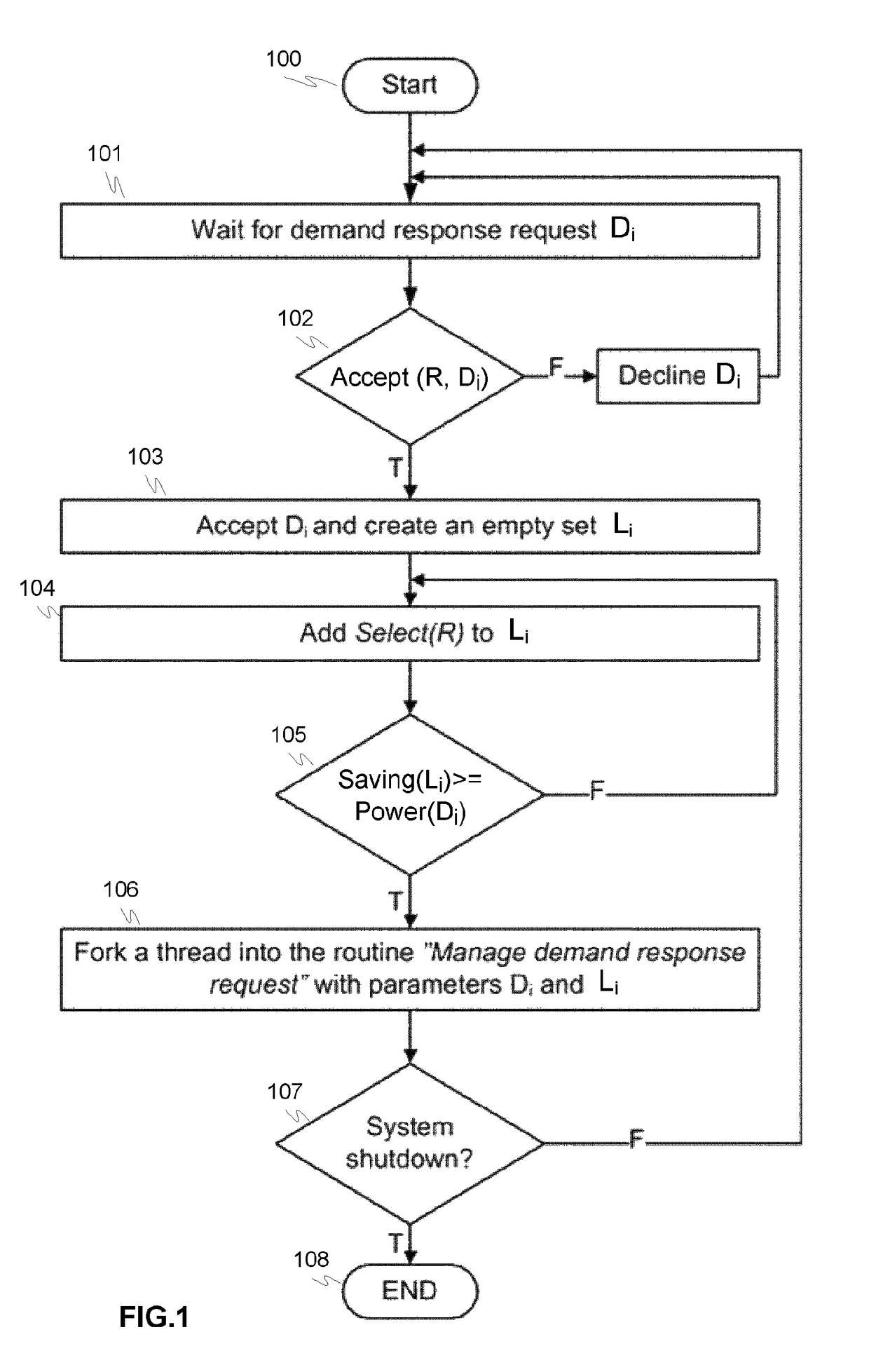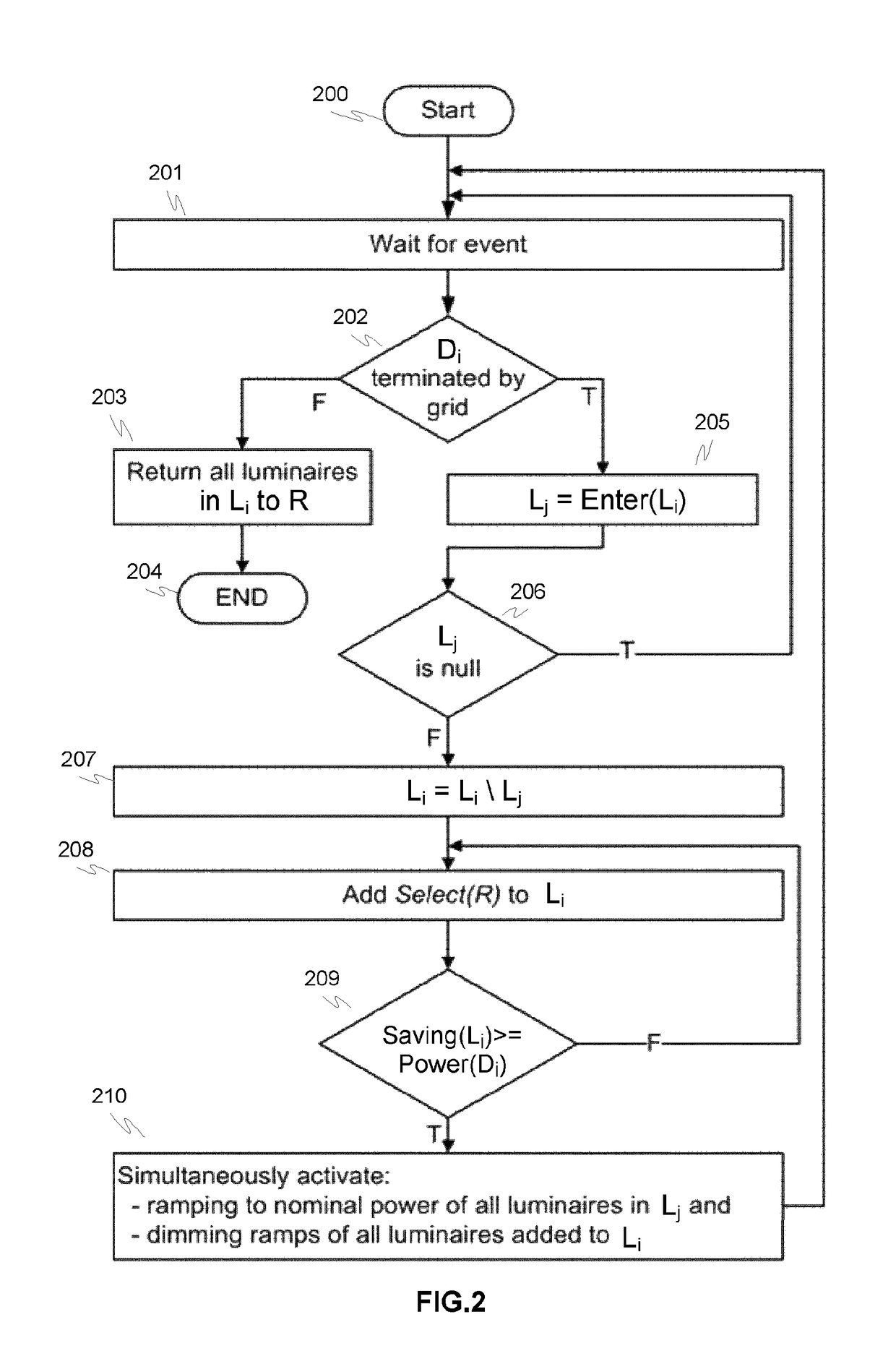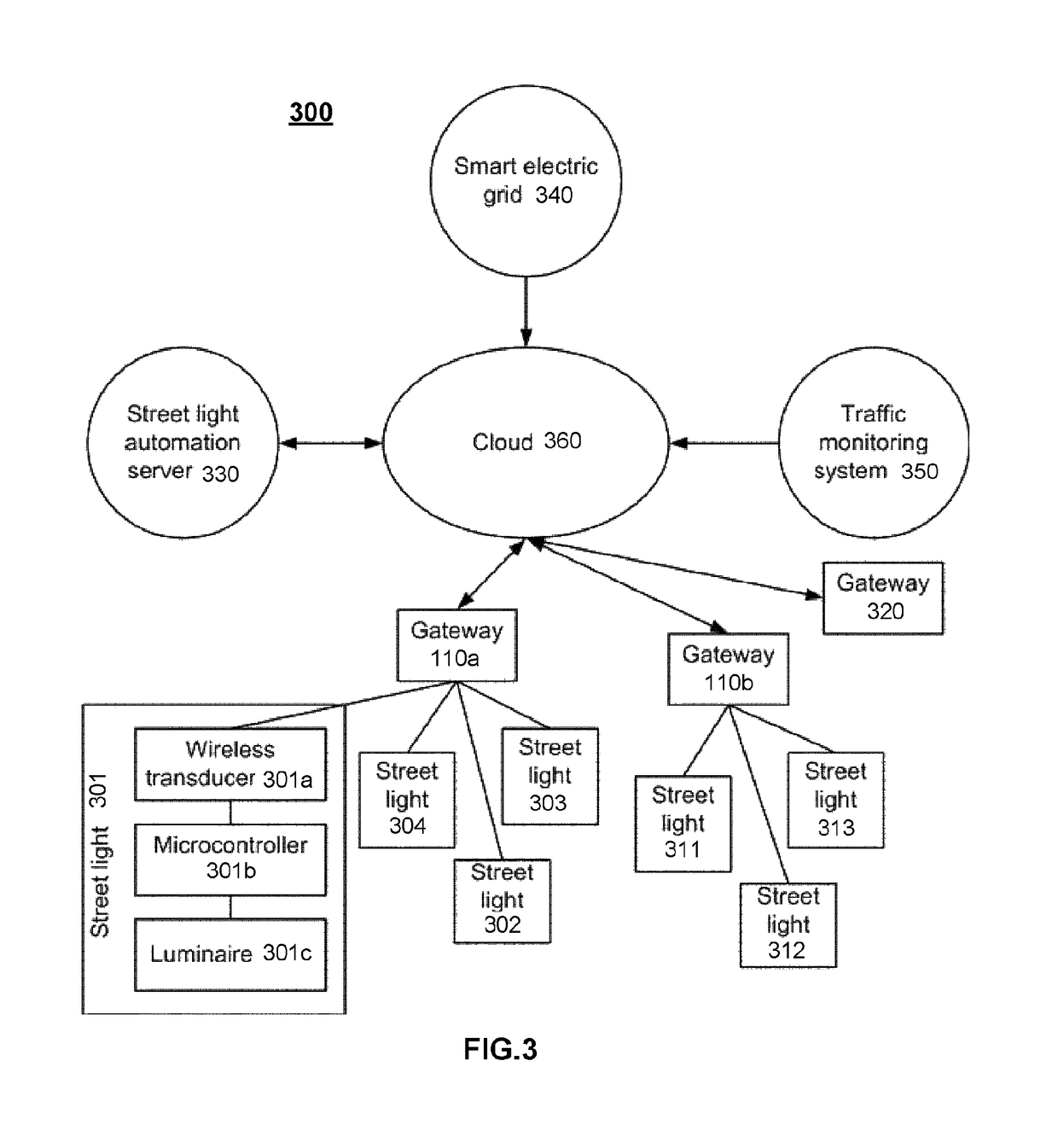Method and system for controlling a lighting network
a lighting network and lighting technology, applied in the integration of power network operation systems, sustainable buildings, instruments, etc., can solve the problems of affecting the safety of users, so as to achieve the effect of sacrificing the safety of users
- Summary
- Abstract
- Description
- Claims
- Application Information
AI Technical Summary
Benefits of technology
Problems solved by technology
Method used
Image
Examples
Embodiment Construction
[0038]FIGS. 1-2 illustrate a principle of an exemplary method 100, 200 for controlling a lighting network based on traffic monitoring according to an advantageous embodiment of the invention, where in FIG. 1 a main routine 100 and in FIG. 2 manage demand response request routine are described in more details.
[0039]The method exploits the capability of individual LED luminaires to be adjusted frequently and rapidly without adverse impacts on the lifetime of the luminaire. In the method the presence of road users is detected and much more significant dimming is performed when there are no road users in the coverage range of the luminaire. There are several possibilities for performing the detection, including but not limited to: (1) traffic monitoring systems using sensors to detect road users, (2) position signals from vehicles or (3) smart phone applications. When the last road user exits the coverage range of the luminaire, no dimming action is necessarily performed, but the street...
PUM
 Login to View More
Login to View More Abstract
Description
Claims
Application Information
 Login to View More
Login to View More - R&D
- Intellectual Property
- Life Sciences
- Materials
- Tech Scout
- Unparalleled Data Quality
- Higher Quality Content
- 60% Fewer Hallucinations
Browse by: Latest US Patents, China's latest patents, Technical Efficacy Thesaurus, Application Domain, Technology Topic, Popular Technical Reports.
© 2025 PatSnap. All rights reserved.Legal|Privacy policy|Modern Slavery Act Transparency Statement|Sitemap|About US| Contact US: help@patsnap.com



